On the rise: Dallas celebrates contemporary art with inaugural music and arts festival
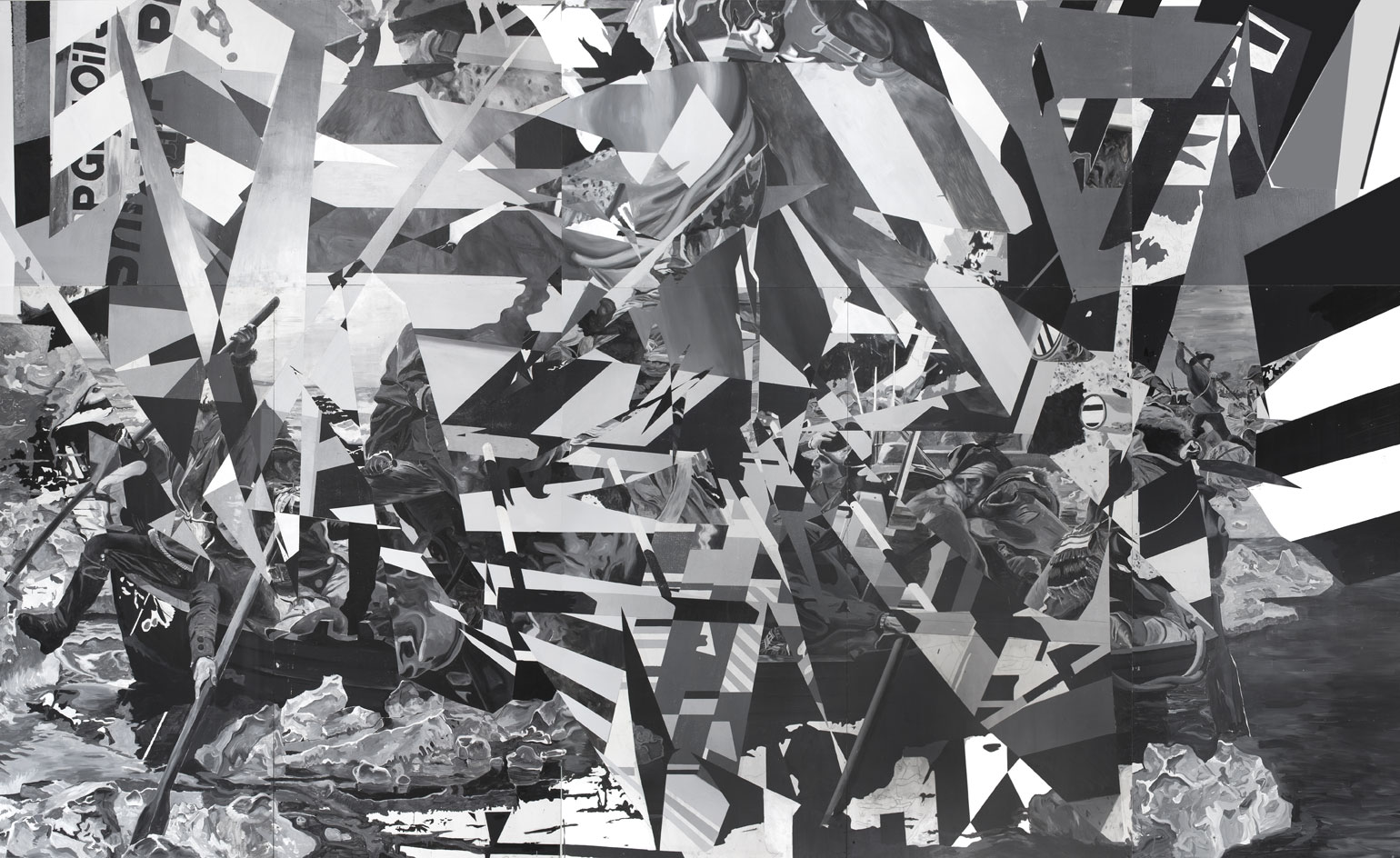
Kevin Beasley’s recent performance at the Dallas Museum of Art began with the artist taking his seat in a microphone-infused rocking chair in the museum’s soaring atrium, his dark throne linked to 24 seat cushions, similarly wired with microphones, scattered on the floor around him. A melody formed by the creaking chair, the choir of cushions and musical tracks chosen by Beasley. A smattering of spectators swelled into a massive crowd of participants that stayed until midnight, talking and dancing, eating and drinking, looking and listening.
This Friday ‘late night’ at the museum was the latest collaborative crescendo for a city that has long been on the up, channeling its booming economy into the largest urban arts district in the United States. This 68-acre swath of downtown Dallas is, in the words of DMA director Maxwell Anderson, ‘a very tidy street, with all of these different monuments by starchitects.’ Buildings by I.M. Pei, Renzo Piano, Norman Foster, and Rem Koolhaas line the road. With its impressive infrastructure complete, the district’s cultural organisations are now focused on defining their individual identities and their shared goals and desired audiences. The ambition and intensity of that cooperation was revealed in the inaugural Soluna International Music and Arts Festival, a three-week event that concluded on Sunday.
Led by the Dallas Symphony Orchestra and its music director, Jaap van Zweden, the festival was conceived as a collection of collaborations - among disciplines, Dallas cultural organisations, and visual artists such as Beasley, Pipilotti Rist, Alex Prager, Yael Bartana, and Monte Laster - around the theme of 'Destination (America)'. ‘The city has spent a billion and a half dollars on this Arts District and until this festival there really hasn’t been a recurring sandbox to play together in,’ says Jonathan Martin, president and CEO of the Dallas Symphony Orchestra. ‘We’re all here geographically but we had all been politely doing our own thing.’
A key force in expanding the festival beyond the orchestral was van Zweden’s daughter, Anna-Sophia, who is passionate about contemporary art. ‘There is a great opportunity for performance art and projects that push the boundaries,’ she says of Dallas. ‘What we want to create with Soluna a platform where artists can meet each other, collaborate, and come with crazy, outside-the-box ideas, and it’s our dream to make those ideas happen for them and with them.’
The festival’s opening night featured Los Angeles-based Prager, whose three films - Face in the Crowd (2013), La Petite Mort (2012), and Despair (2010) - were screened along with original scores performed live by the Dallas Symphony Orchestra. Another evening was dedicated to Rist’s new film, commissioned to accompany a performance of Miklos Rozsa’s Andante for Strings, Op. 22a. Beasley’s work, also commissioned for the festival, was concerned with the physicality of sound itself.
Another festival highlight came in the form of a video commission from Laster, a Texas native who has worked in Paris since 1994. His Destination, in Five Movements unfolded on screen as van Zweden conducted a program of patriotic favourites on the eve of America’s Memorial Day. The five-part video, created in collaboration with students from a local performing arts high school, dealt with migration and identity issues. ‘What I found interesting about the theme of destinations was the individual journey and physical displacement; "Movement" takes on many meanings and prompts new questions.’
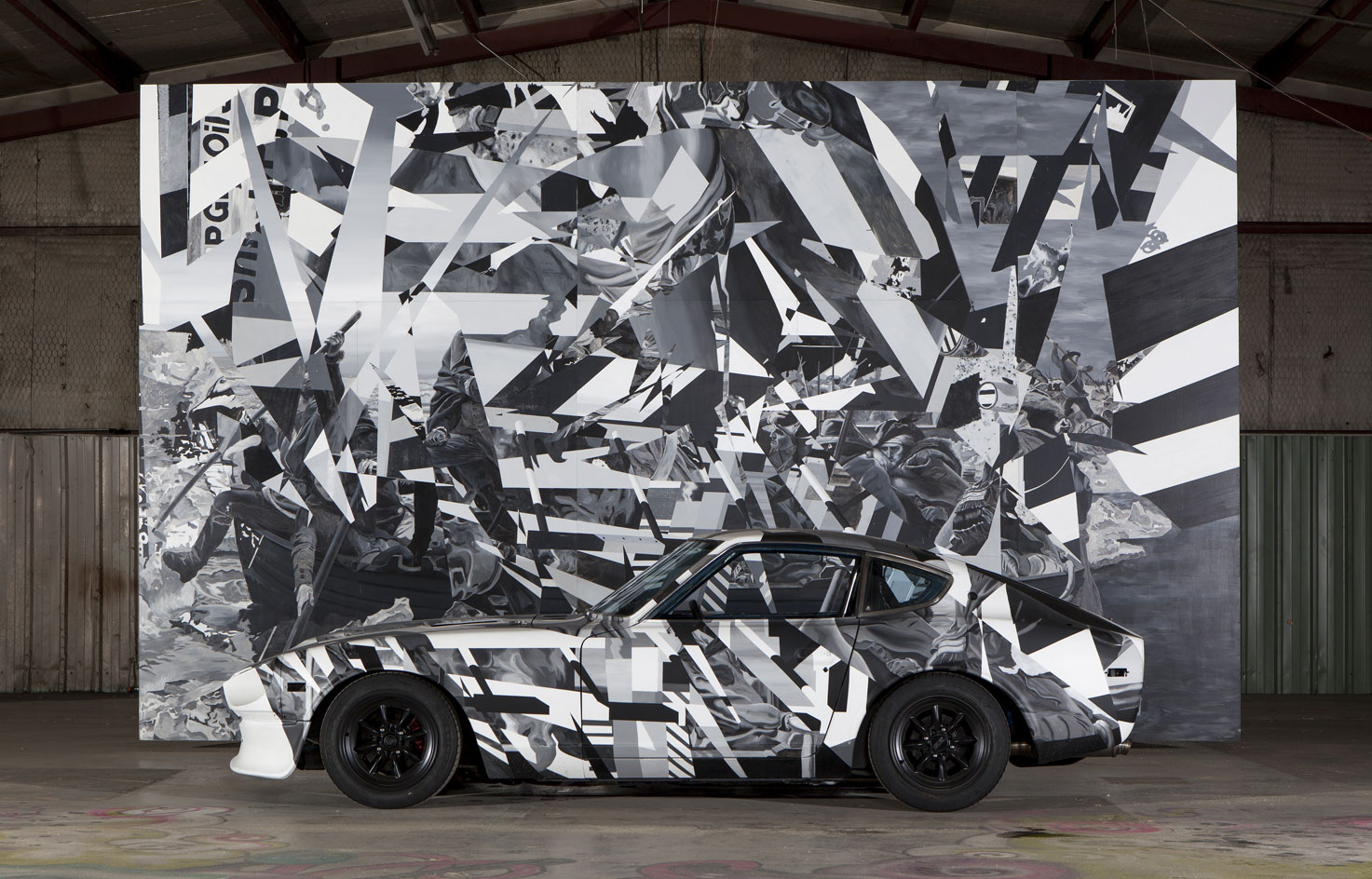
The piece consists of a performance and installation based on the famous 1851 painting combined with a Japanese export car refurbished by Mexican-American brothers
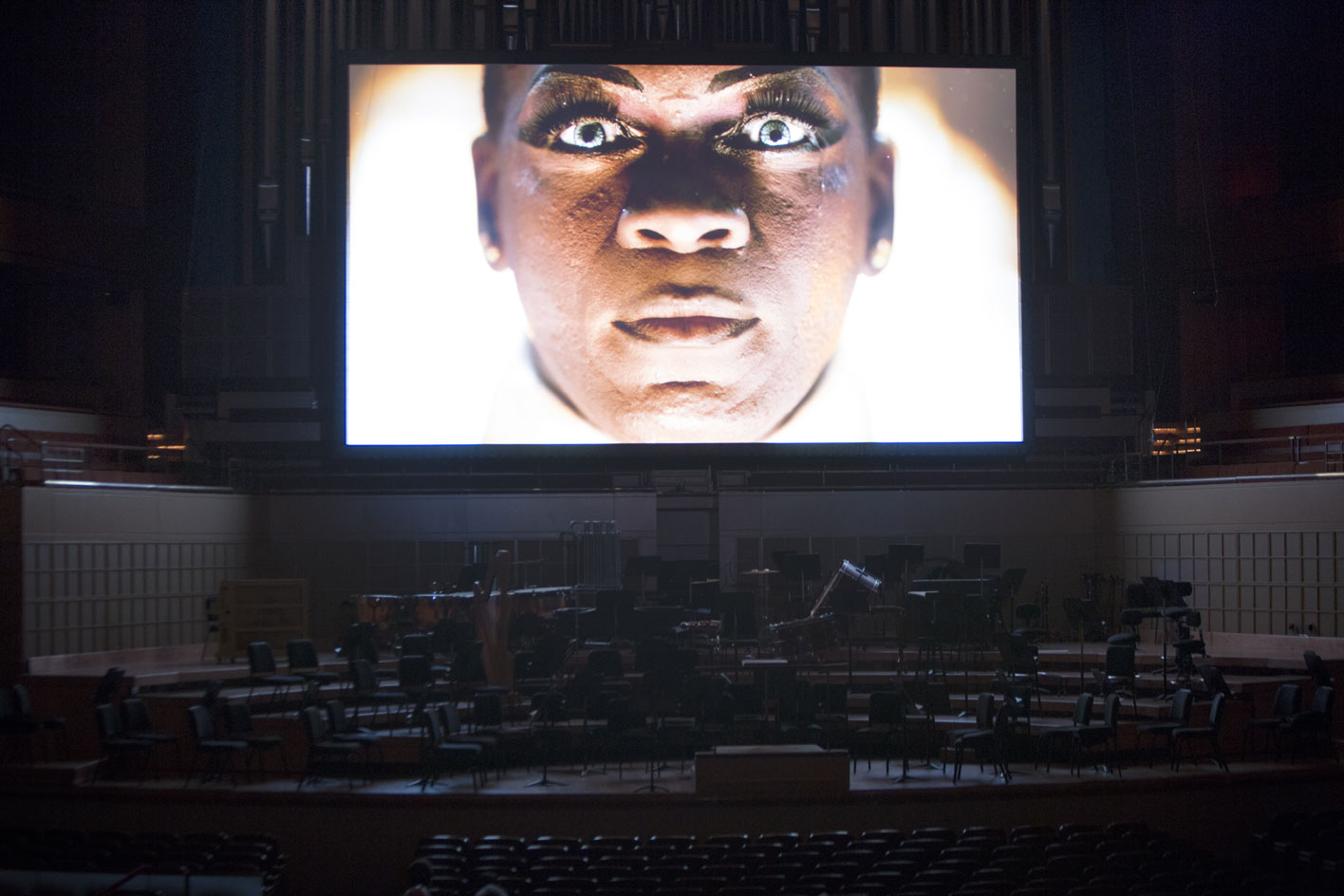
The festival was conceived as a collection of collaborations - among disciplines, Dallas cultural organisations, and visual artists. Pictured here a screening of artist Yael Bartana's Inferno (2013), a film about the inauguration of a replica of Solomon's Temple in Sao Paulo, Brazil
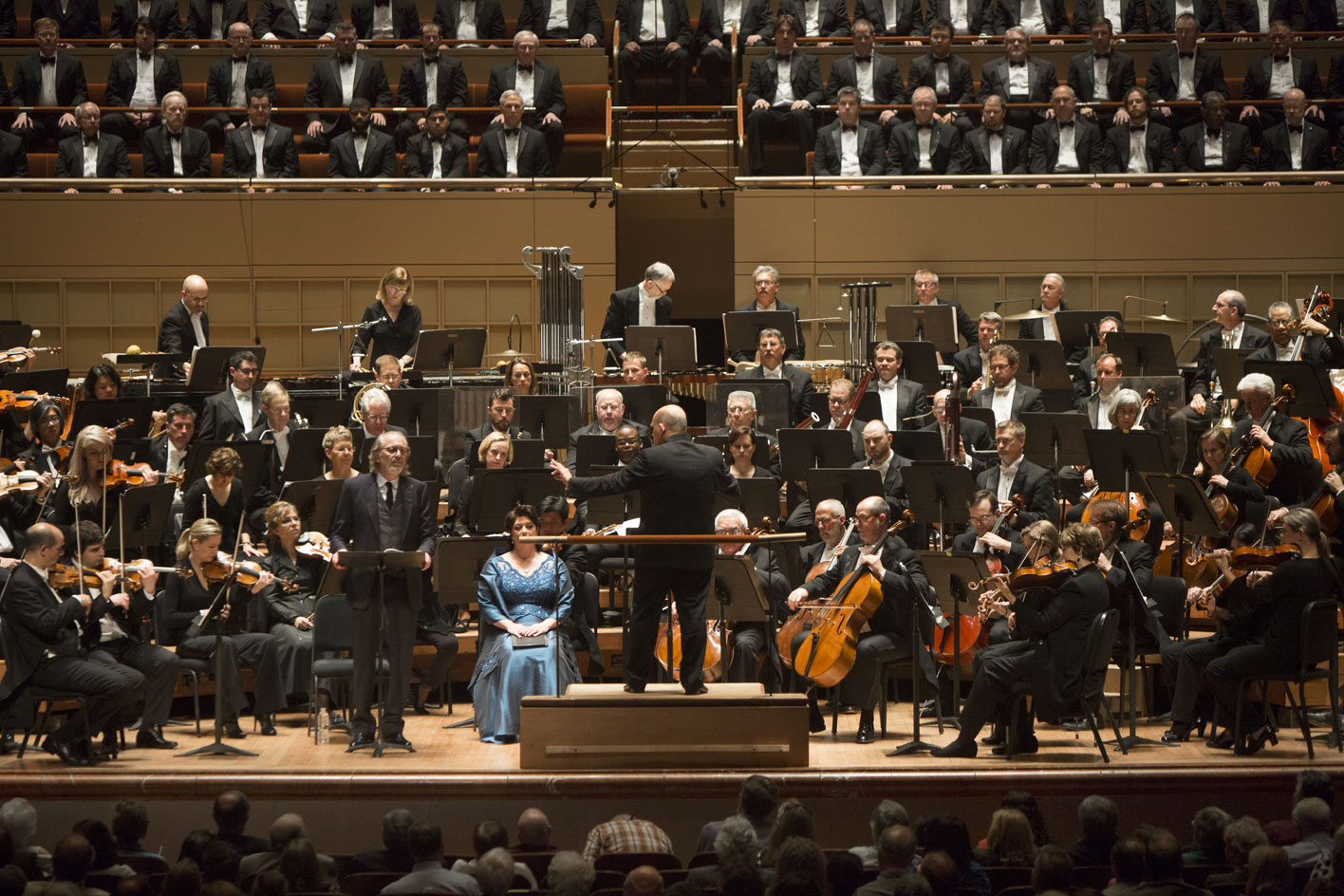
The festival was led by the Dallas Symphony Orchestra and its music director, Jaap van Zweden
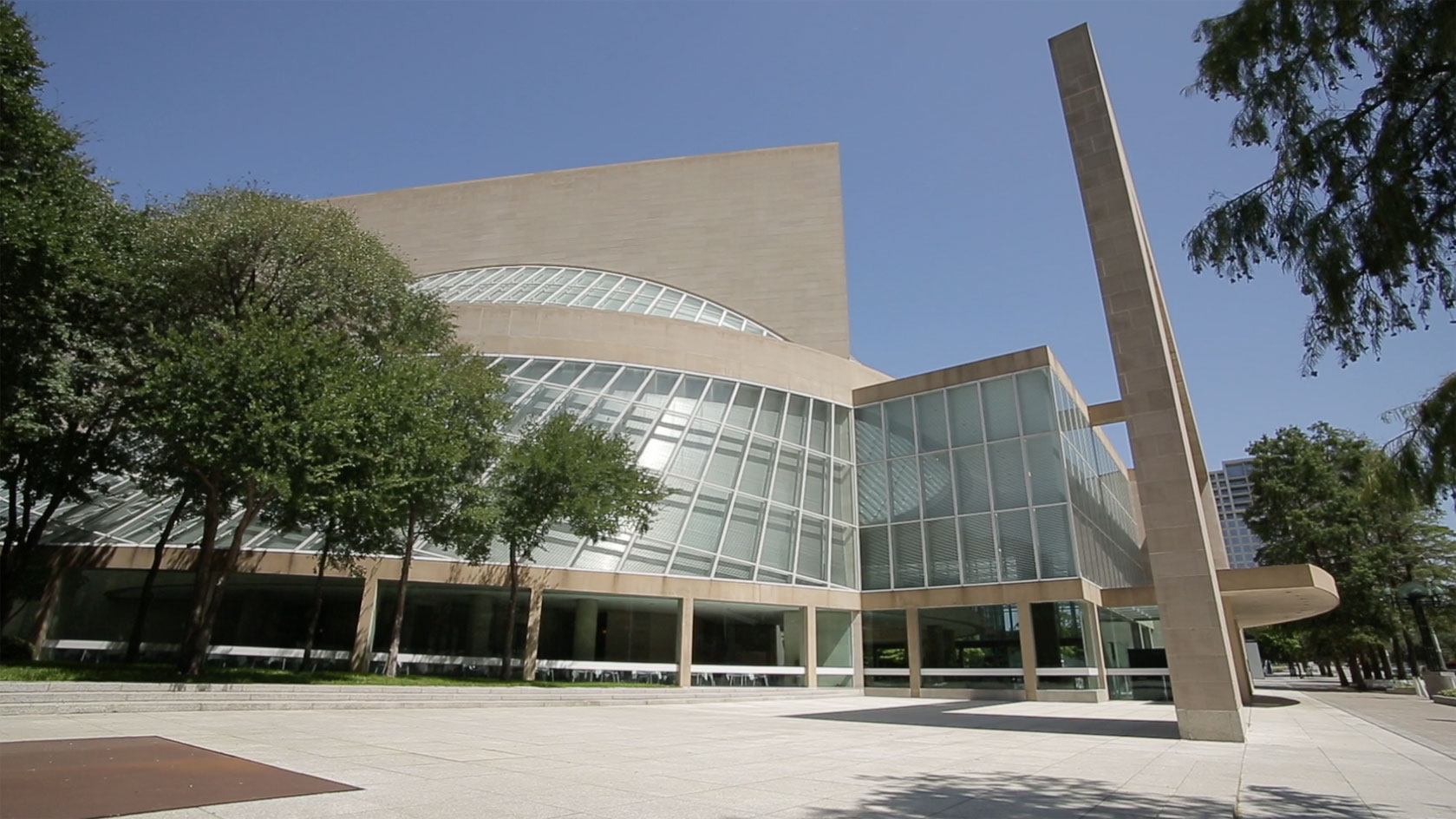
The Morton H. Meyerson Symphony Center, home to the Dallas Symphony Orchestra and constructed of Italian travertine marble, Indiana limestone, and concrete

The lobby of the center is designed by I.M. Pei and completed in 1989. The stairs lead to the McDermott Concert Hall, a 'shoebox'-style music chamber
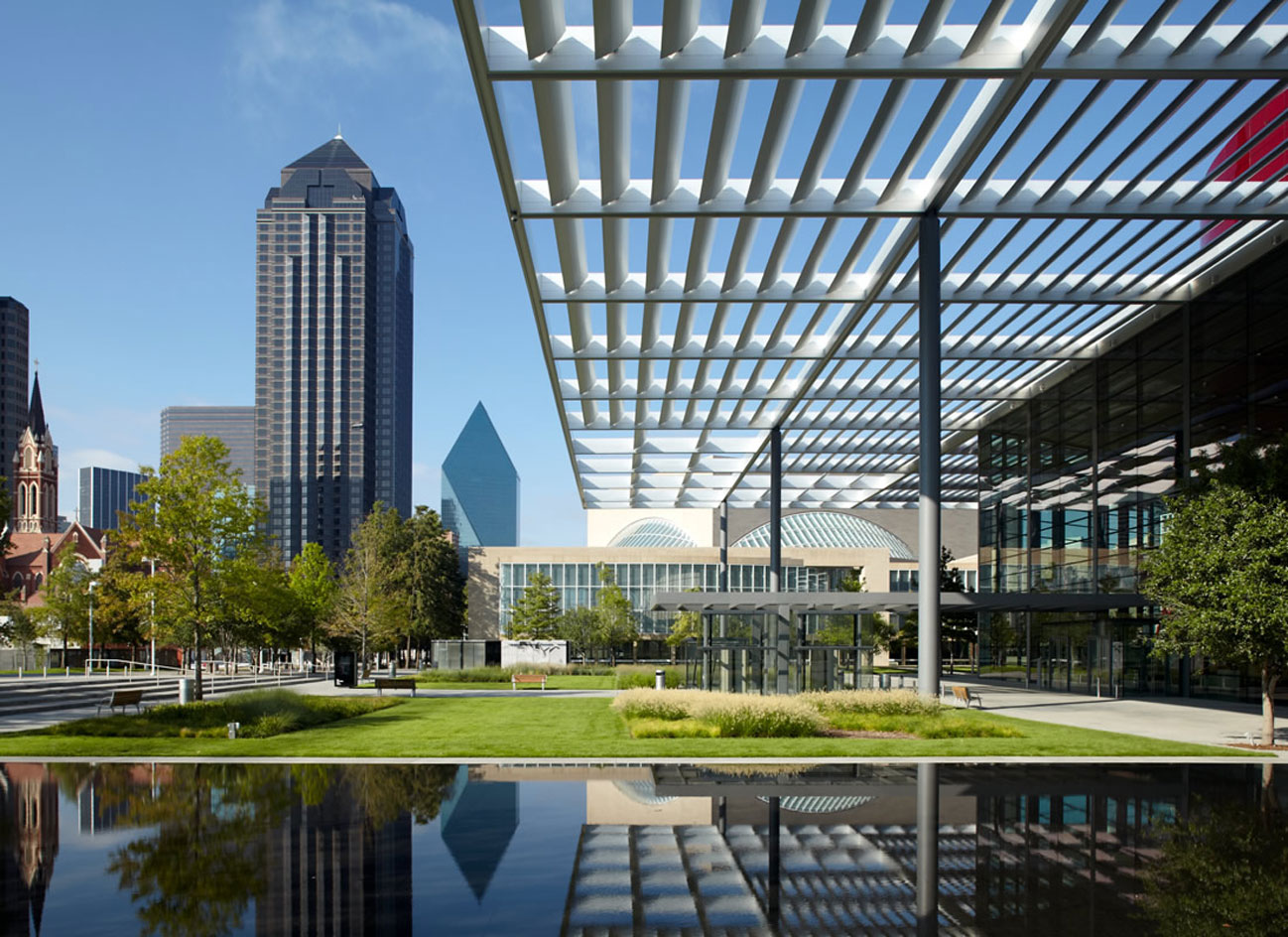
A view of the Dallas Arts District, a 68-acre, 19-block neighborhood in the heart of the city. Cultural buildings by I.M. Pei, Renzo Piano, Norman Foster, and Rem Koolhaas line the road
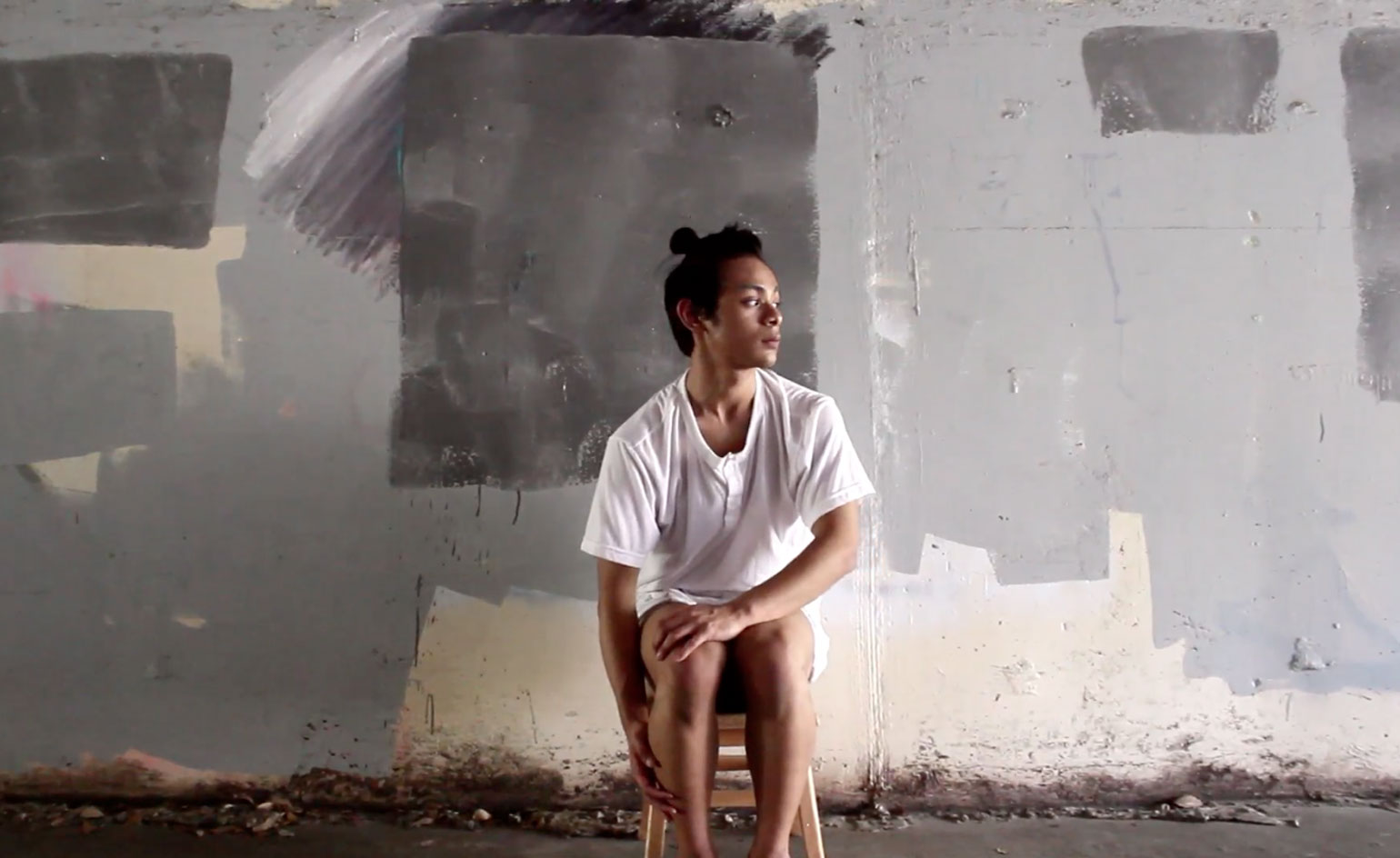
Another festival highlight was a video commision from Paris-based artist Monte Laster, 'Destination in Five Movements.' A participatory artwork made with Dallas schools and other organizations over a period of six months
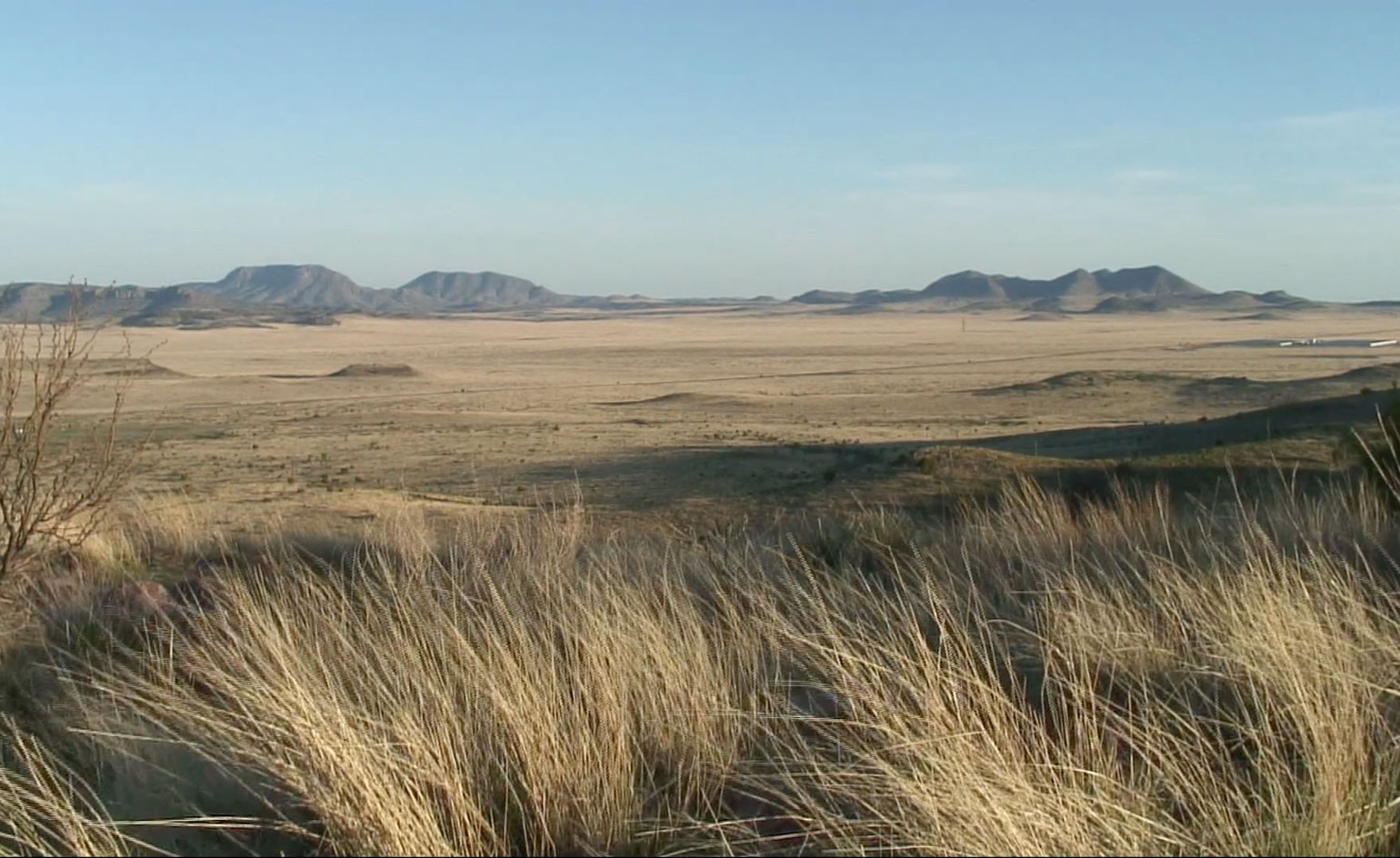
The video was shown in conjunction with the Memorial Day salute to the Armed Forces by Jaap van Zweden and the Dallas Symphony
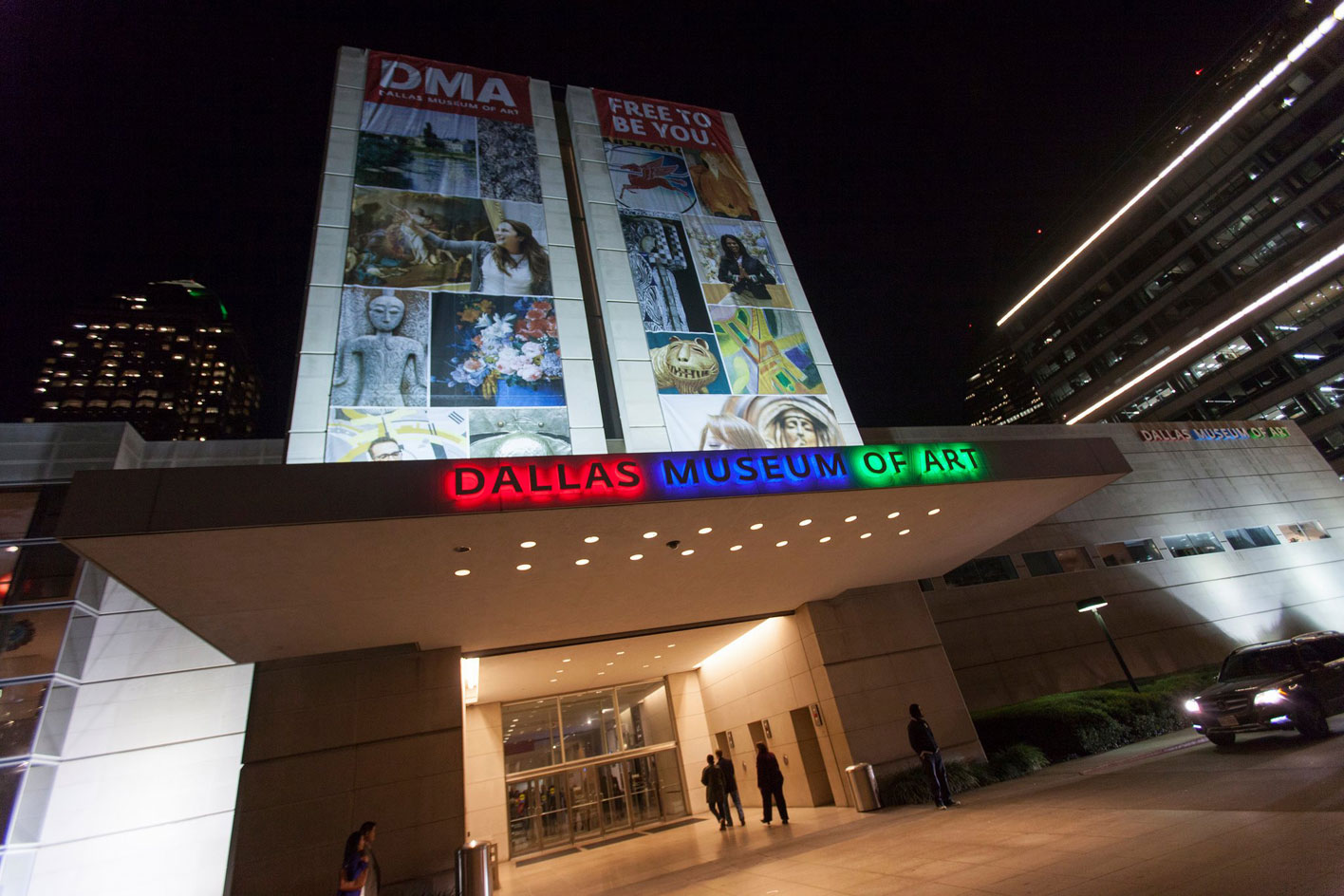
'Late Night' at the Dallas Museum of Art that welcomed thousands of visitors until midnight. A collaborative crescendo for the city, channeling its booming economy into the largest urban arts district in the United States
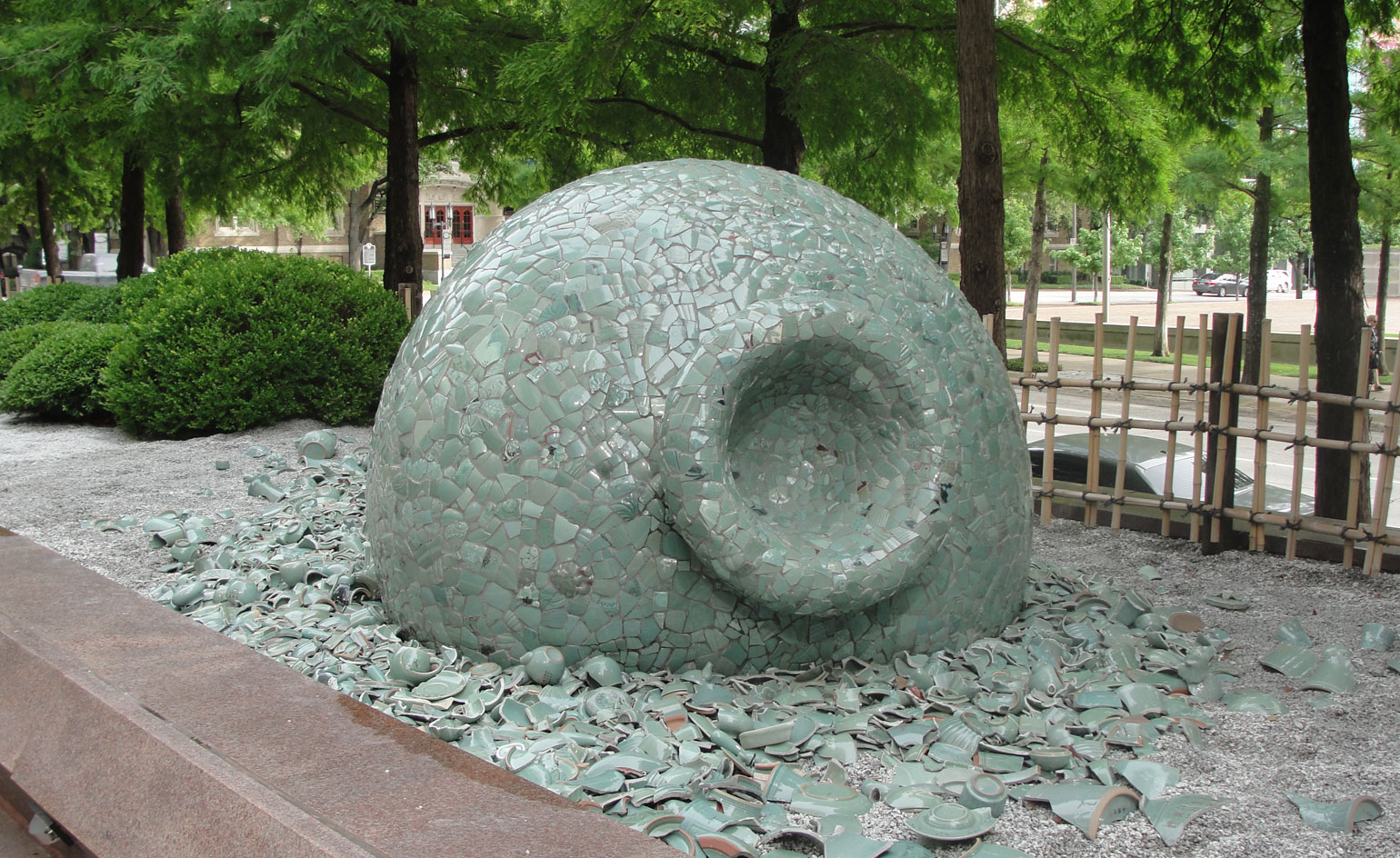
New York artist Jean Shin created Celadon Landscape for the Crow Collection of Asian Art Sculpture Garden in Dallas. The ceramic monumental sculpture is on view through the end of 2015
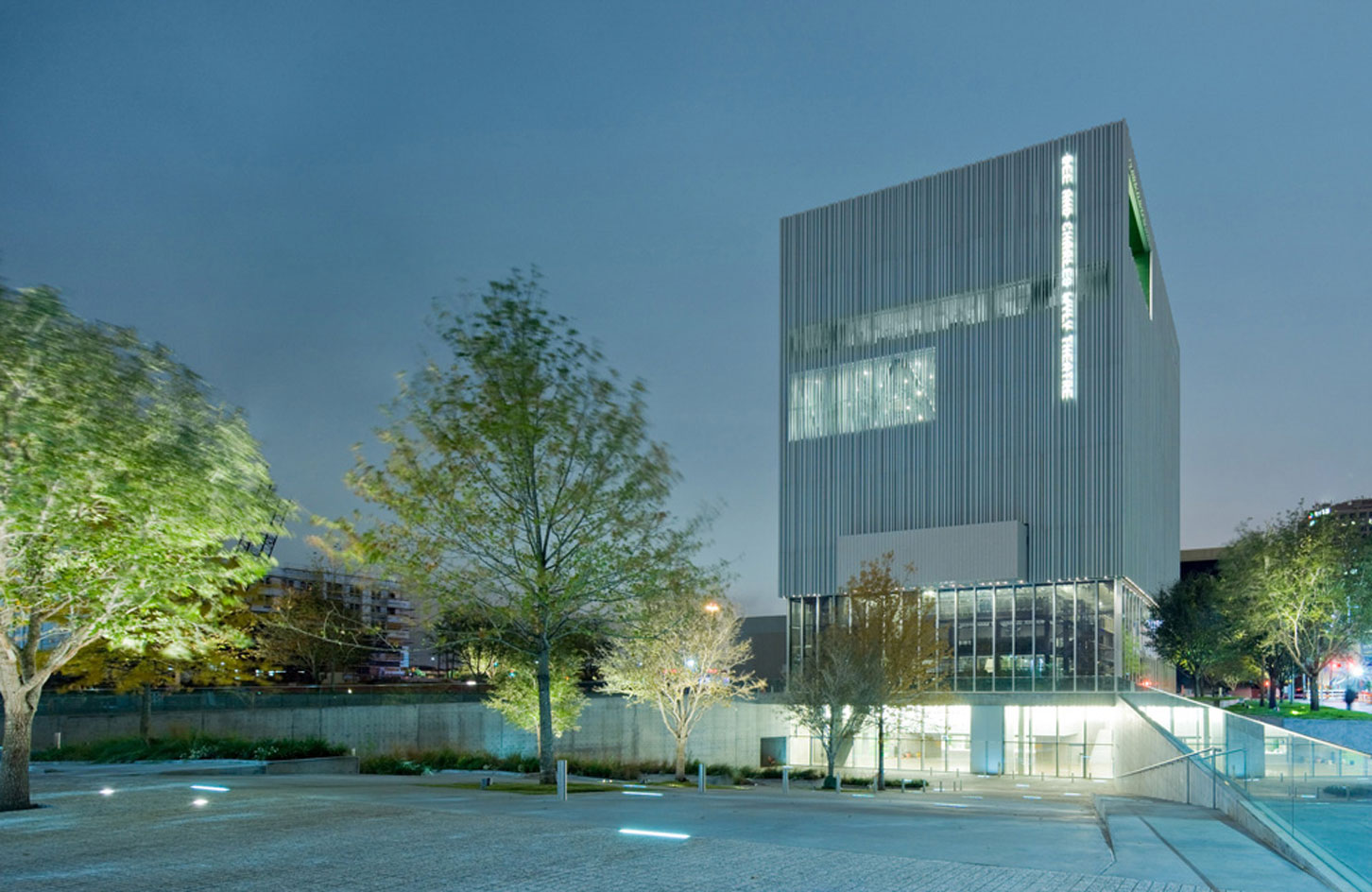
Designed by Joshua Prince-Ramus and Rem Koolhaas, the Dee and Charles Wyly Theatre is part of the AT&T Performing Arts Center in the district. The 575-seat theater can fit all kinds of configurations
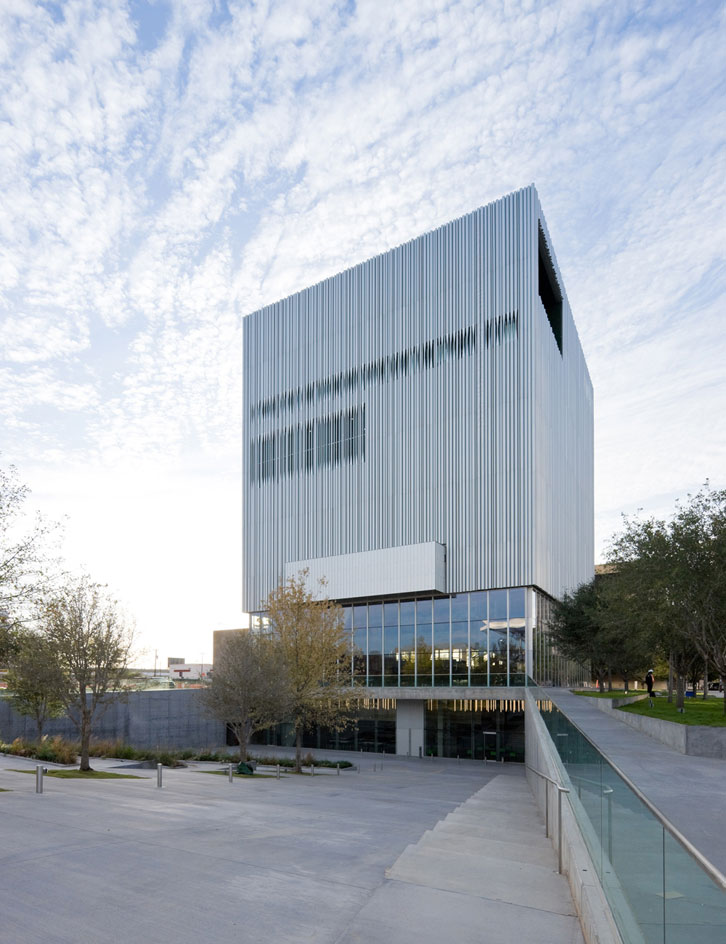
The compact, vertical orientation of the 12-story building allows support spaces to be stacked above and beneath the auditorium rather than wrapped around it
Wallpaper* Newsletter
Receive our daily digest of inspiration, escapism and design stories from around the world direct to your inbox.
Stephanie Murg is a writer and editor based in New York who has contributed to Wallpaper* since 2011. She is the co-author of Pradasphere (Abrams Books), and her writing about art, architecture, and other forms of material culture has also appeared in publications such as Flash Art, ARTnews, Vogue Italia, Smithsonian, Metropolis, and The Architect’s Newspaper. A graduate of Harvard, Stephanie has lectured on the history of art and design at institutions including New York’s School of Visual Arts and the Institute of Contemporary Art in Boston.
-
 Marylebone restaurant Nina turns up the volume on Italian dining
Marylebone restaurant Nina turns up the volume on Italian diningAt Nina, don’t expect a view of the Amalfi Coast. Do expect pasta, leopard print and industrial chic
By Sofia de la Cruz
-
 Tour the wonderful homes of ‘Casa Mexicana’, an ode to residential architecture in Mexico
Tour the wonderful homes of ‘Casa Mexicana’, an ode to residential architecture in Mexico‘Casa Mexicana’ is a new book celebrating the country’s residential architecture, highlighting its influence across the world
By Ellie Stathaki
-
 Jonathan Anderson is heading to Dior Men
Jonathan Anderson is heading to Dior MenAfter months of speculation, it has been confirmed this morning that Jonathan Anderson, who left Loewe earlier this year, is the successor to Kim Jones at Dior Men
By Jack Moss
-
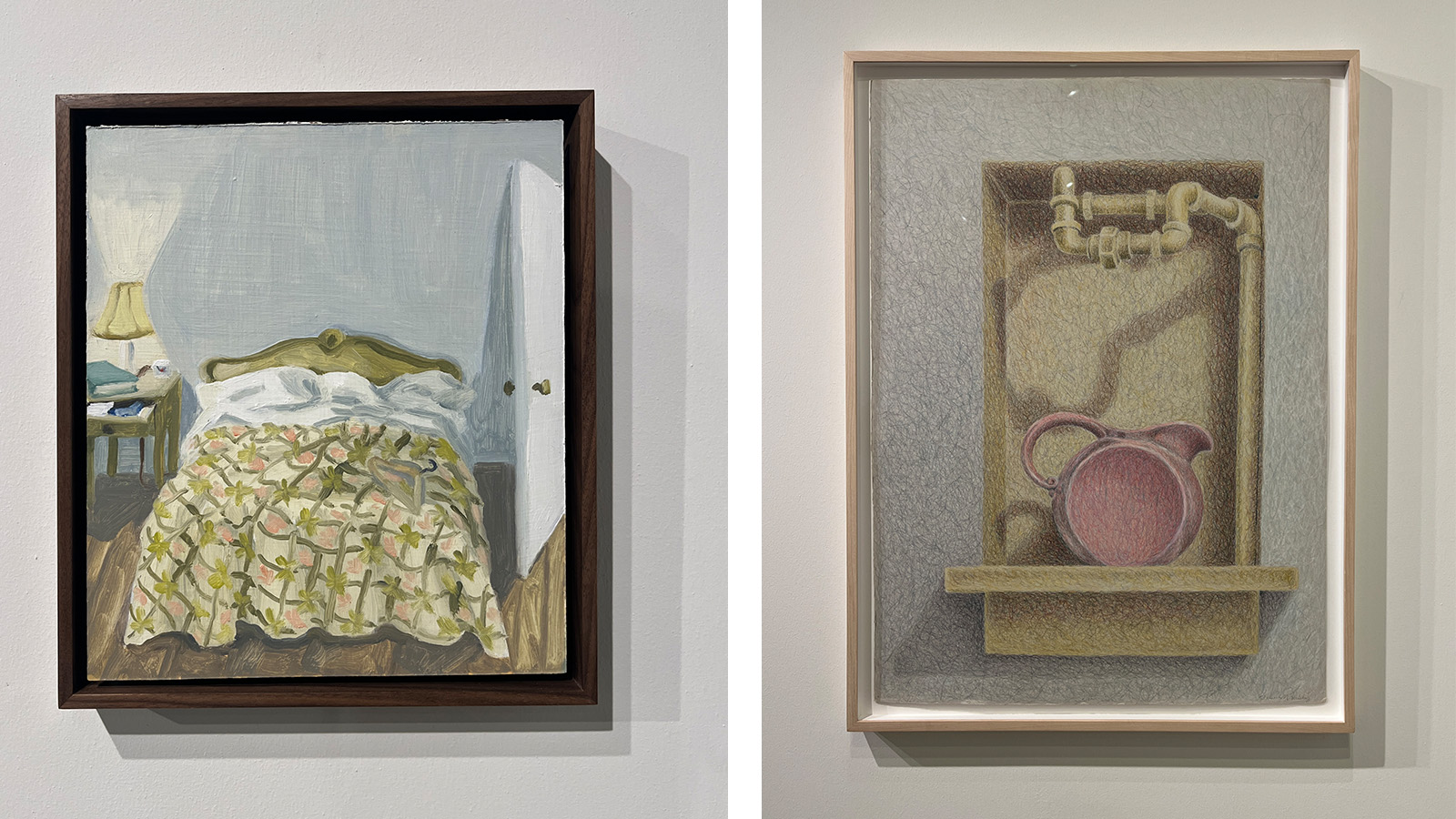 Dallas Art Fair 2024: what to see
Dallas Art Fair 2024: what to seeThe Dallas Art Fair celebrates galleries in the U.S Southwest. This year artists share a penchant for wide open spaces and a focus on the natural world. Here are our highlights
By Angella d'Avignon
-
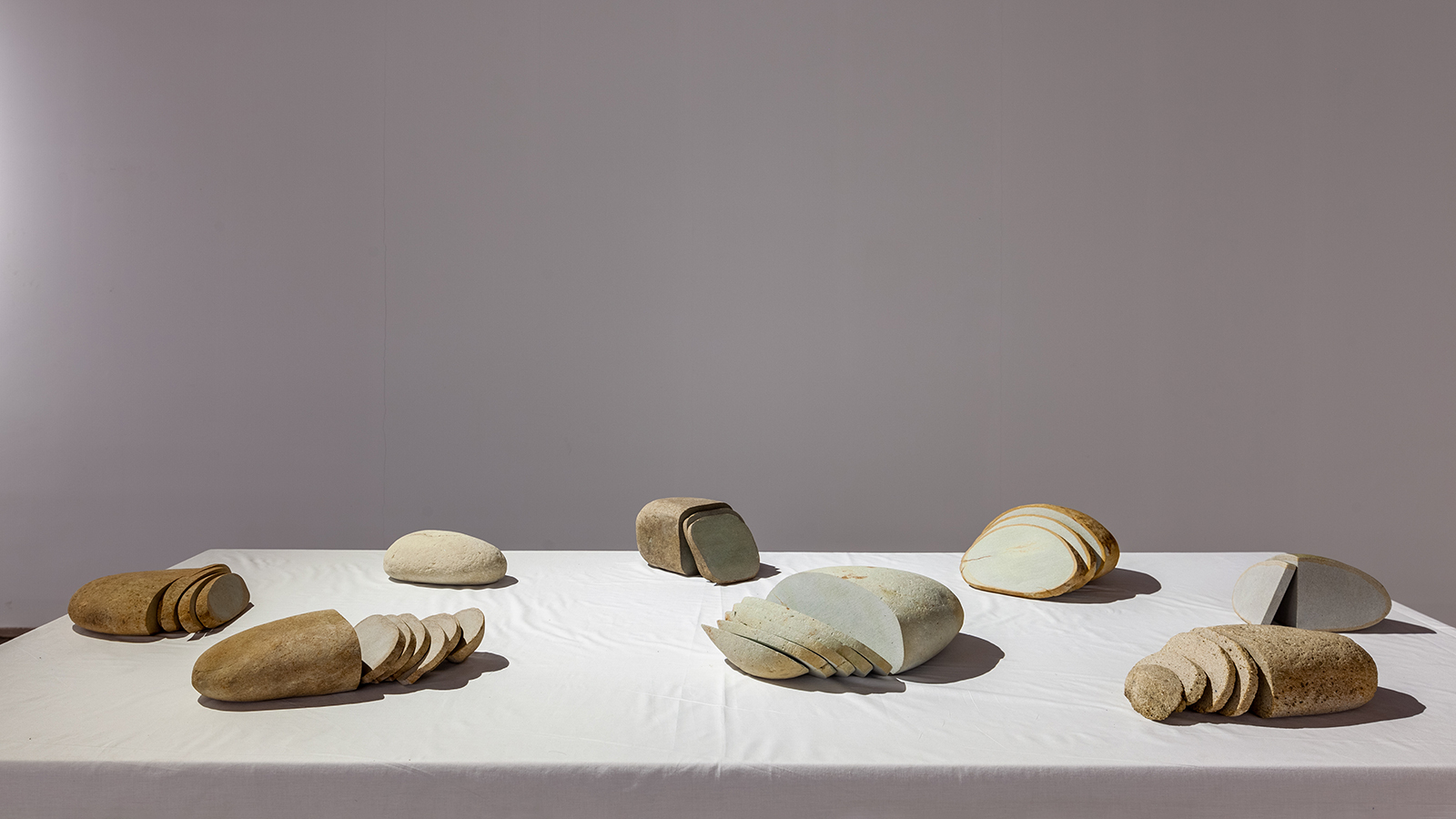 ‘In Our Veins Flow Ink and Fire’: a fervent return for India’s Kochi-Muziris Biennale
‘In Our Veins Flow Ink and Fire’: a fervent return for India’s Kochi-Muziris BiennaleIn its fifth edition, the postponed Kochi-Muziris Biennale surpasses the intersectional, collaborative essence of previous editions, writes Aastha D
By Aastha D
-
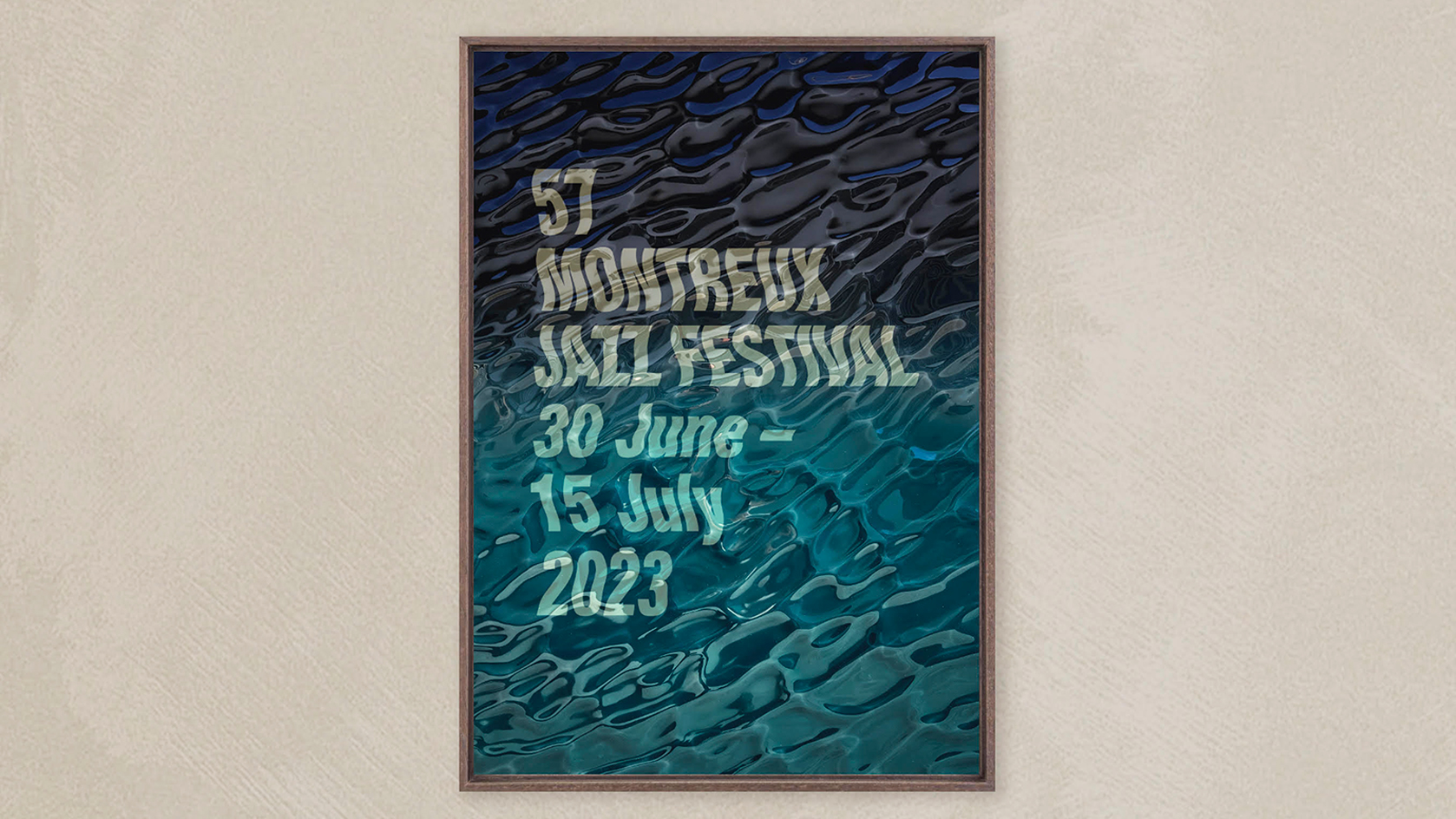 Montreux Jazz Festival posters: a visual history
Montreux Jazz Festival posters: a visual historyAs artist Guillaume Grando (SupaKitch) unveils his poster for the 57th Montreux Jazz Festival (30 June - 15 July 2023), we reflect on the most memorable designs since 1967, including from David Bowie to Andy Warhol and Camille Walala
By Harriet Lloyd-Smith
-
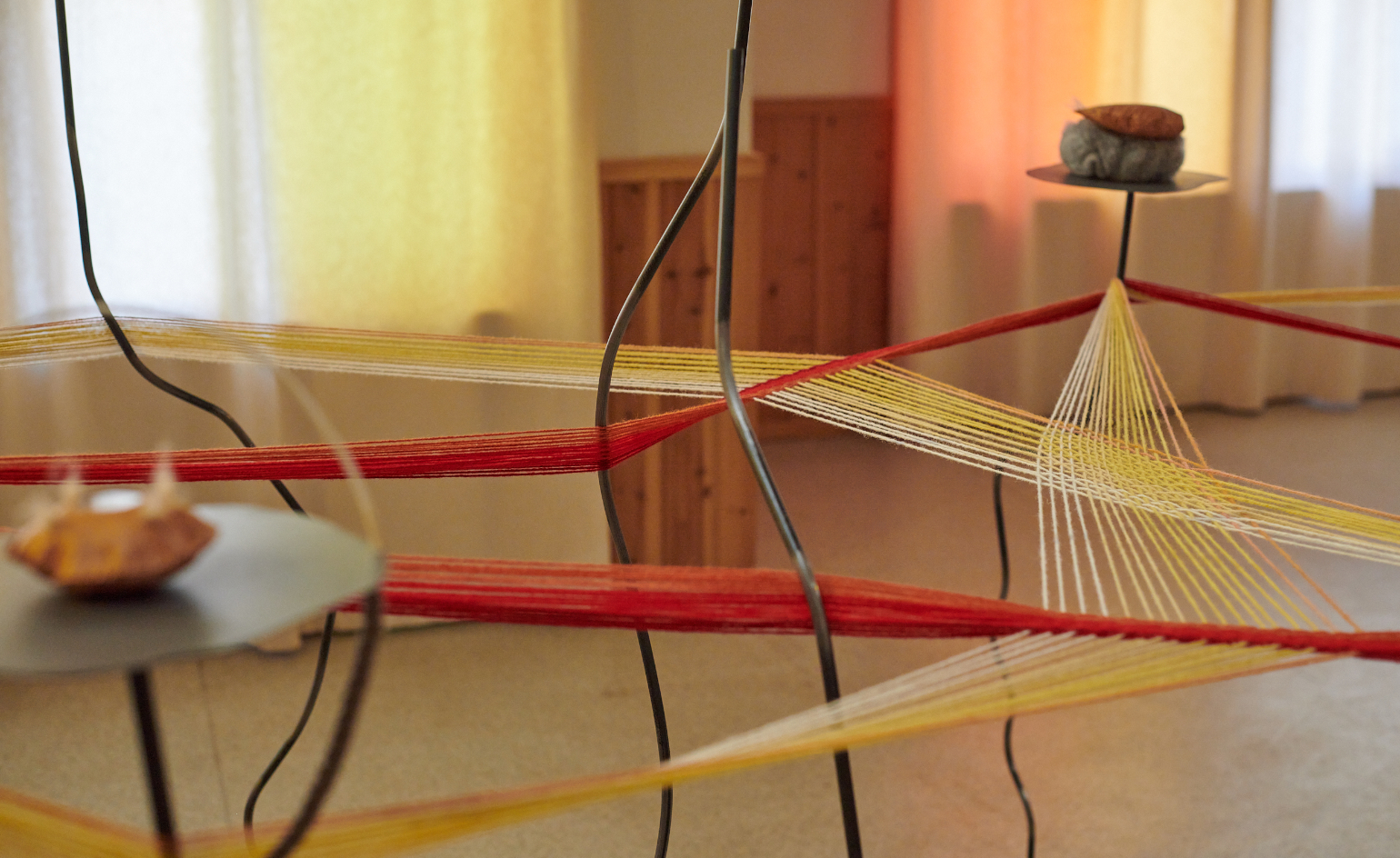 A tantalising tale of art and Gothic horror in Norway’s Arctic archipelago
A tantalising tale of art and Gothic horror in Norway’s Arctic archipelagoWe visit the 2022 edition of the Lofoten International Art Festival (LIAF) in Norway's Arctic archipelago, an edition filled with myth, politics and Gothic horror.
By Louise Long
-
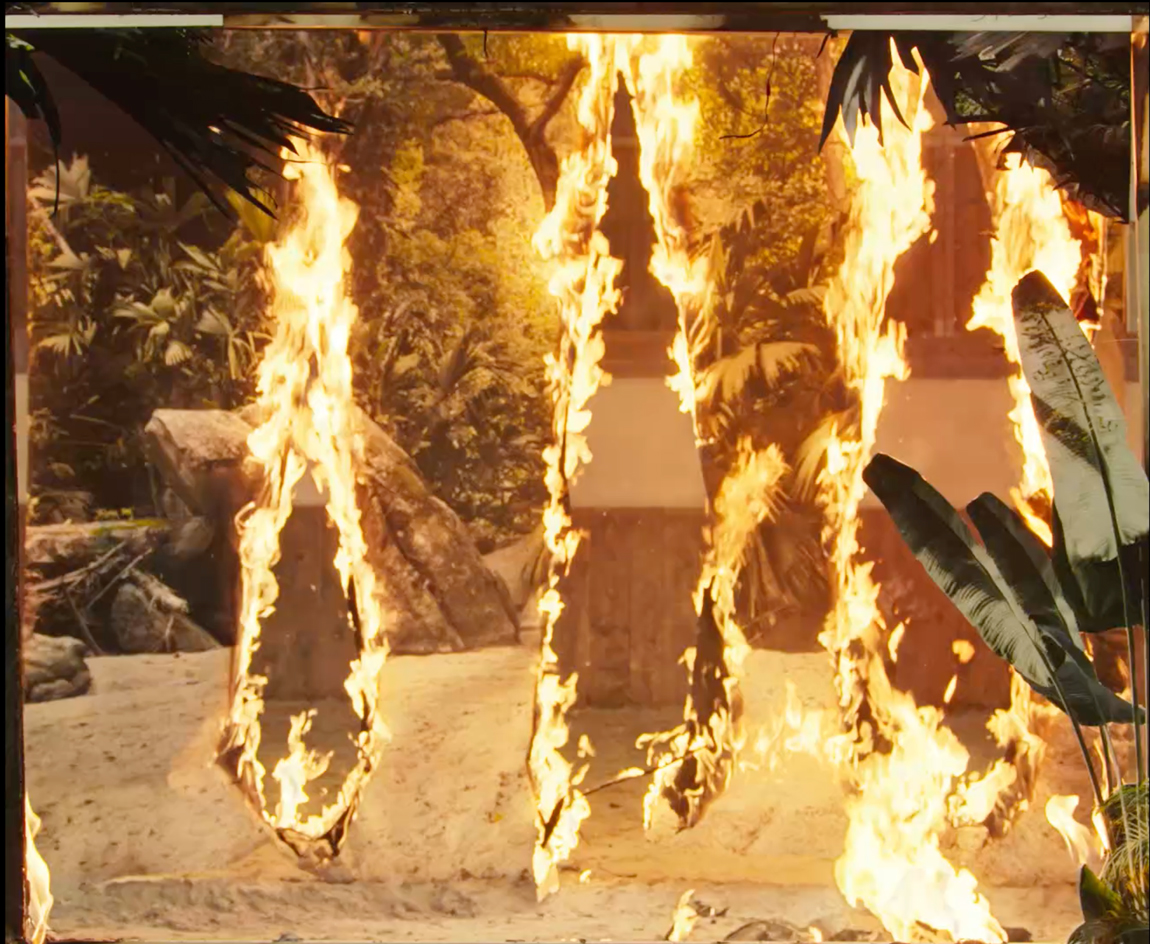 Rencontres d’Arles 2022: five photography exhibitions not to miss
Rencontres d’Arles 2022: five photography exhibitions not to missWe took a trip to Les Rencontres d’Arles, the world’s premier photography festival, to scout out the best photography exhibitions under the sun this year
By Sophie Gladstone
-
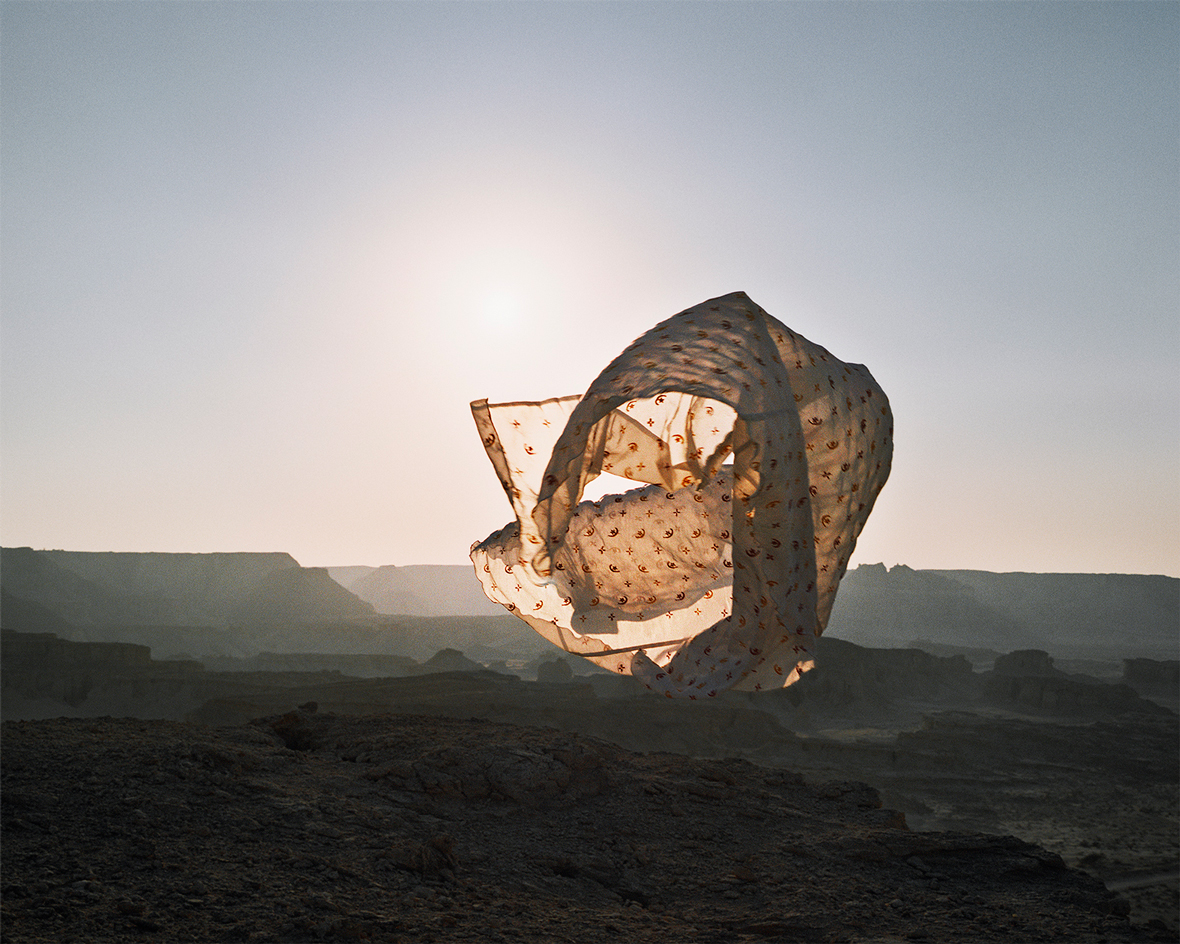 Photo 2022: a trip through past, present and potential futures in Melbourne and beyond
Photo 2022: a trip through past, present and potential futures in Melbourne and beyondThe groundbreaking Photo 2022 International Festival of Photography will return to Melbourne from 29 April – 22 May 2022. Charlotte Jansen spoke to artistic director Elias Redstone ahead of the opening
By Charlotte Jansen
-
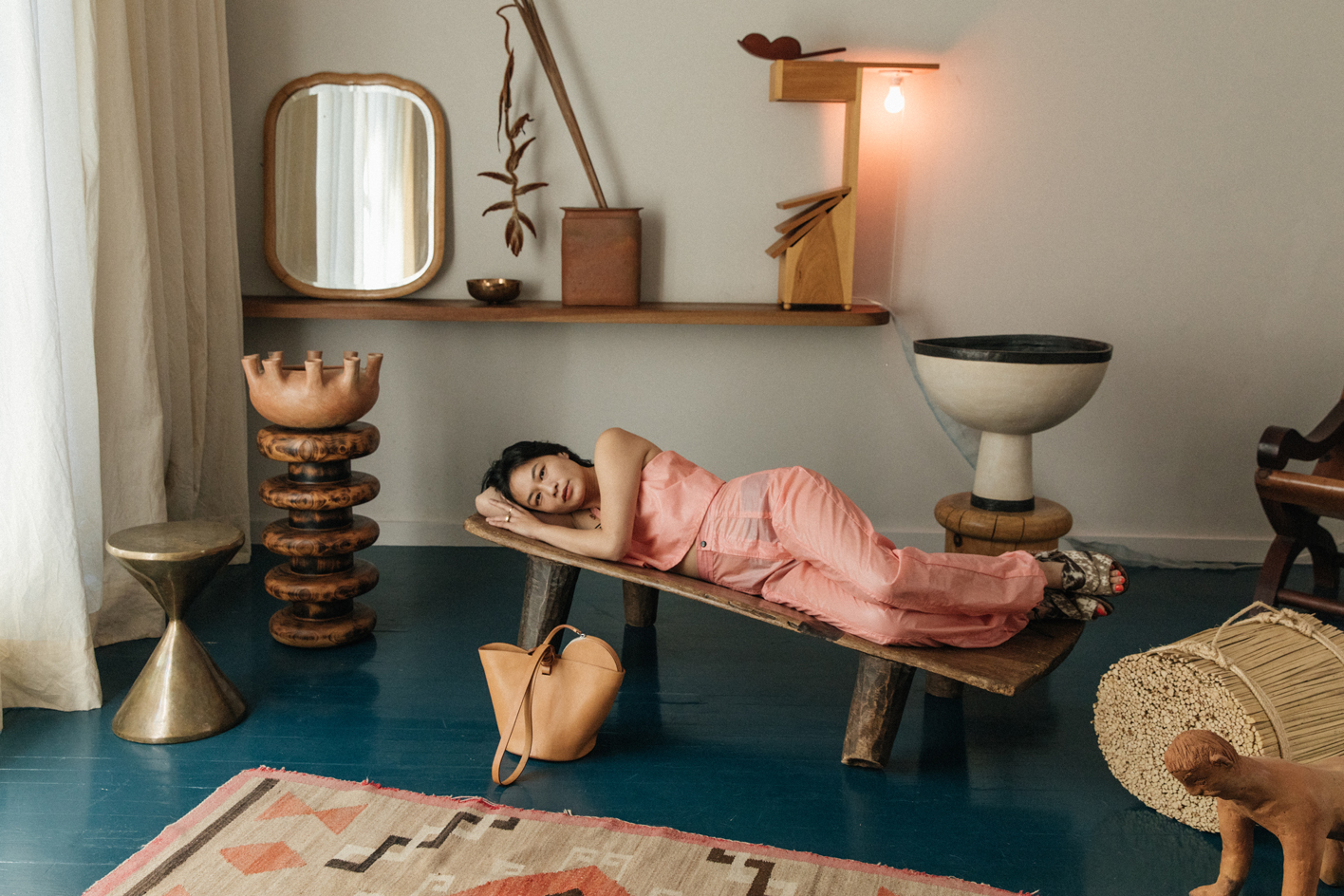 In Dallas, Nasher Prize Dialogues will explore sculpture’s new frontiers
In Dallas, Nasher Prize Dialogues will explore sculpture’s new frontiersInspired by 2022 Nasher Prize winner Nairy Baghramian, the latest talk in this international discussion programme – ‘The Uncanny Politics of Objects’, 2 April 2022 – takes a boundary-breaking turn with a panel spanning art, architecture and design
By Harriet Lloyd Smith
-
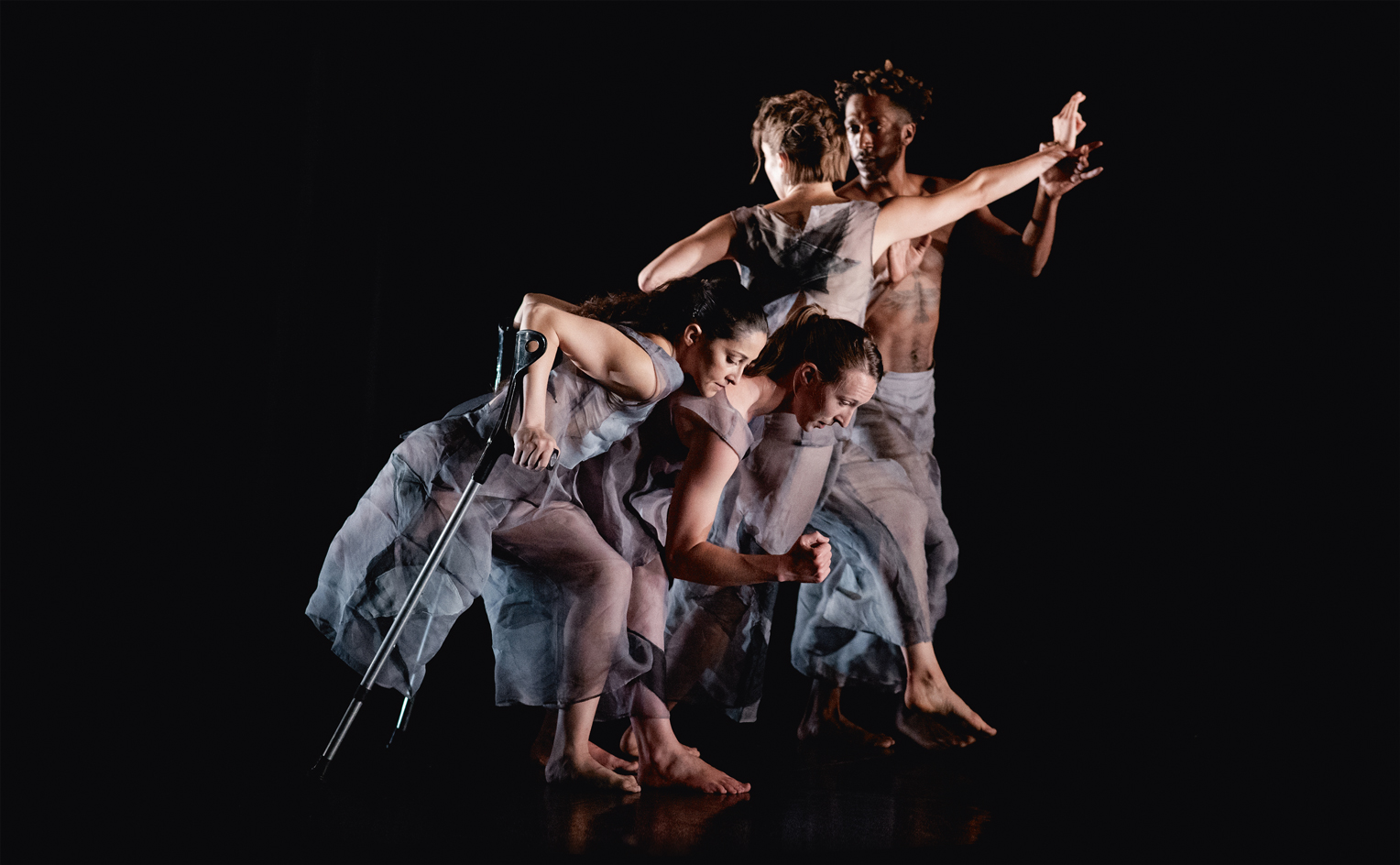 Dance Reflections: progressive new festival blends art and movement
Dance Reflections: progressive new festival blends art and movementThe inaugural edition of Dance Reflections by Van Cleef & Arpels Festival marks a bold new fixture on the performing arts calendar. In London from 9 – 23 March 2022, the initiative has been conceived in collaboration with Sadler’s Wells, the Royal Opera House and Tate Modern. Here’s what to expect
By Rachael Moloney